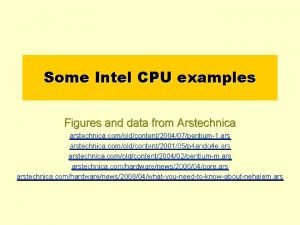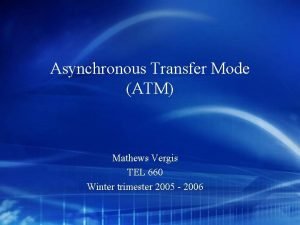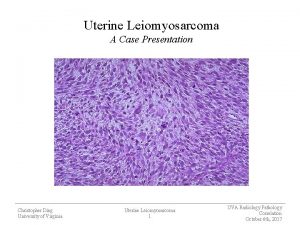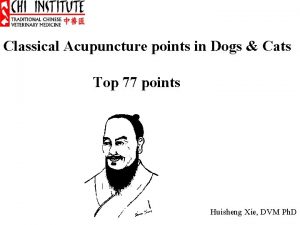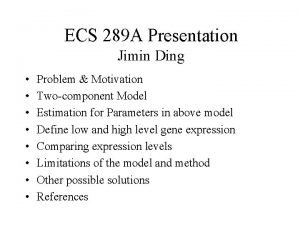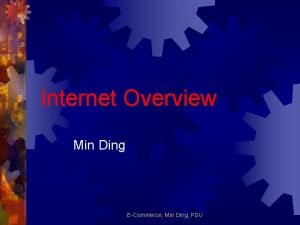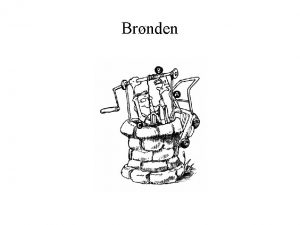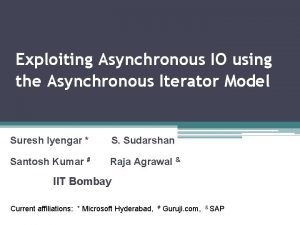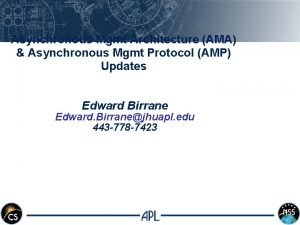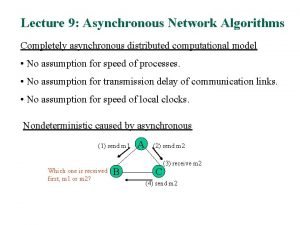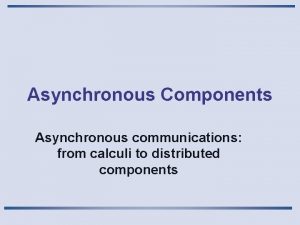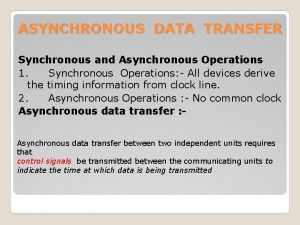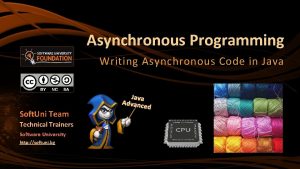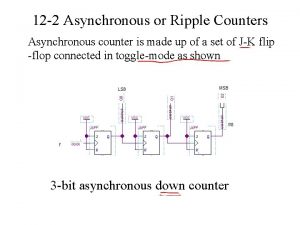Asynchronous CPUs Peter Ding History of Asynchronous CPUs











![References • [1] Barton, R. S. (1961). A new approach to the functional design References • [1] Barton, R. S. (1961). A new approach to the functional design](https://slidetodoc.com/presentation_image_h2/a107b9095e7c062983c56b9d3e98108e/image-12.jpg)
- Slides: 12

Asynchronous CPUs Peter Ding

History of Asynchronous CPUs • In 1952, the University of Illinois built the Ordnance Discrete Variable Automatic Computer • ORDVAC • In 1962, the University of Illinois built the Illinois Automatic Computer ILLIAC II • Speed-Independent Circuity • Mersenne Prime Numbers •

Caltech Asynchronous Microprocessor • World’s first asynchronous microprocessor in 1988 • Hot coffee caused the pulse rate to slow down • Liquid nitrogen caused the pulse rate to speed up • Ran on a potato

Asynchronous CPUs • No central clock • “Pipeline controls” or “FIFO sequencers” • Starts the next stage of logic after the existing stage is completed • Speed only limited by propagation delays of logic gates • Components can run at different speeds • Clocked CPU components are synchronized with the central clock

Asynchronous CPUs • Lower power consumption • Clock can consume 40 -70% of the power budget • Consumes next to zero energy when idle • Lower electromagnetic interference Clocked CPUs will have large regular spikes of radio frequency energy during peak current demands • Different components at different speeds yield irregular spikes with small amplitudes and wider peaks •

Asynchronous CPUs • Not bottlenecked by a clock • Avoids clock skew

Two-phase Handshake Protocol

Four-phase Handshake Protocol

Bundle-data Encoding

Multi-rail Encoding

Obstacles of Asynchronous CPUs • Testability • Design Tools Support • Design Practice
![References 1 Barton R S 1961 A new approach to the functional design References • [1] Barton, R. S. (1961). A new approach to the functional design](https://slidetodoc.com/presentation_image_h2/a107b9095e7c062983c56b9d3e98108e/image-12.jpg)
References • [1] Barton, R. S. (1961). A new approach to the functional design of a digital computer. IRE-AIEE -ACM '61 (Western) Papers, 393 -396. • [2] Electronic computers within the Ordnance Corps. Retrieved from http: //ftp. arl. mil/mike/comphist/61 ordnance/chap 4. html • [3] ILLIAC II-A Short Description and Annotated Bibliography. (1965). IEEE Transactions on Electronic Computers, IEEE Transactions on, IEEE Trans. Electron. Comput, (3), 399. doi: 10. 1109/PGEC. 1965. 264146 • [4] Martin, Alain J. , Burns, Steven M. , Lee, T. K. , Borkovic, Drazen. , Hazewindus, Pieter J. (1989). The Design of an Asynchronous Microprocessor. Proc. Decennial Caltech Conference on VLSI, 20 -22 • [5] Potato Power. Retrieved from http: //www. async. caltech. edu/~mika/potato 3. html • [6] Pahinkar, Sanskriti. , Negandhi, Harshita. (2013). Asynchronous Microprocessor. International Journal of Scientific and Research Publications (3) • [7] Asynchronous Design. Retrieved from http: //hdlplanet. tripod. com/comp_arch/async. html
 Ding dong, ding dong christmas bells are ringing
Ding dong, ding dong christmas bells are ringing Morning bells are ringing
Morning bells are ringing Which function is incorporated into some intel cpus
Which function is incorporated into some intel cpus Asynchronous transfer mode history
Asynchronous transfer mode history Leiomyosarcoma
Leiomyosarcoma How did language start
How did language start Sanaysay na may simula gitna at wakas
Sanaysay na may simula gitna at wakas Bai hui acupuncture point dog
Bai hui acupuncture point dog Chinese dynasties
Chinese dynasties Uri ng pasalaysay
Uri ng pasalaysay Neha chetry
Neha chetry Jimin ding
Jimin ding Heograpiya ng sinaunang kabihasnang greek
Heograpiya ng sinaunang kabihasnang greek


